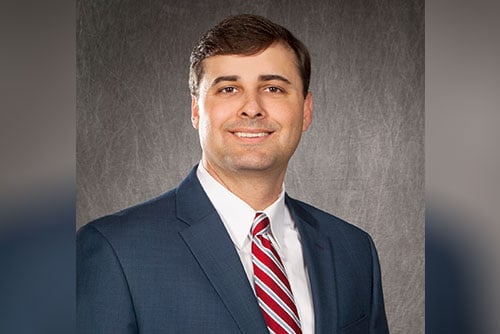

Religious institutions are considered safe havens by their followers, but the evolving insurance needs of these houses of worship reveal that key risks are approaching the altar – from cyberattacks to abuse and molestation cases and even commercial auto claims.
“There are several things that have changed over the years. Certainly, one of the hot button topics that you see in any industry is cyber insurance, and churches are not special when it comes to that risk,” said Andy Lott (pictured), managing partner at Insurance Office of America (IOA). “You have a lot of church members’ information that’s being collected, gathered, and stored, so they have the responsibility of protecting it. Churches are either unfamiliar with that or don’t have the correct coverage in place.”
With the commercial auto marketplace reeling as carriers ‘tighten their belts’, churches that use vehicles and staff members to pick up other church-goers might also bear the burden of higher insurance costs. After all, if a 14-passenger van gets into a serious accident, there’s a lot of liability at stake.
“A lot of churches are seeing some pretty steep increases in premiums, as well as possible exclusions,” explained Lott. “You’ve got church vans, for example, that will transport fairly large numbers of people around, and some insurance companies are starting to exclude auto from their coverage, so they’re having to go find auto insurance elsewhere, or they’re limiting the amount of vehicles that can be used to transport large groups.”
But the main attention-grabbing headlines around churches these days have to do with the scandals hitting the Catholic church and other religious institutions, though there is coverage available for this risk.
“That would be a specific item to abuse and molestation coverage, and that’s been around for a while,” said Lott. “Whether or not institutions purchase that is certainly up to them, but that’s what that coverage is designed for – if there are any allegations of abuse and molestation, then it’s there to provide defense and indemnity coverage should it actually be determined that it’s necessary.”
Luckily for churches and their insurance agents, there are pews full of mitigation strategies they can employ to minimize their risks.
“From a cyber insurance standpoint, getting cyber insurance is helpful, but [also] making sure you have the proper IT software and roadblocks in the way to keep cybercriminals from hacking your information. That can be everything from firewalls to backed up server information, and a robust IT staff,” said Lott, though he notes that smaller churches can have challenges implementing these safeguards because of their budgets.
Meanwhile, from an auto standpoint, said Lott, churches should be “hiring and reviewing drivers that have good [driving records]. You don’t want to put someone behind the wheel that’s a bad driver, so if you have vehicles in your church, then implement better procedures on the frontend to determine who can drive those vehicles and then have strict regulations to not allow someone to get behind the wheel.”
For abuse and molestation risk mitigation, IOA advises that churches discuss risk management strategies with other professionals, such as social workers, psychologists, and law enforcement, that might have important suggestions and recommendations.
Some things that churches are already doing is putting in place policies to make sure that there are always two adults or more present with children, even if they were simply going to and from a park, or even classroom to classroom. Background checks are also important.
The budget issue is, nonetheless, one that many religious organizations face when seeking out insurance.
“If you don’t have the money and you can’t afford the coverage, then it makes it very difficult,” said Lott. “You get introduced to a new line like cyber or something else, and all of a sudden, you have to create money to pay for [the coverage].”
